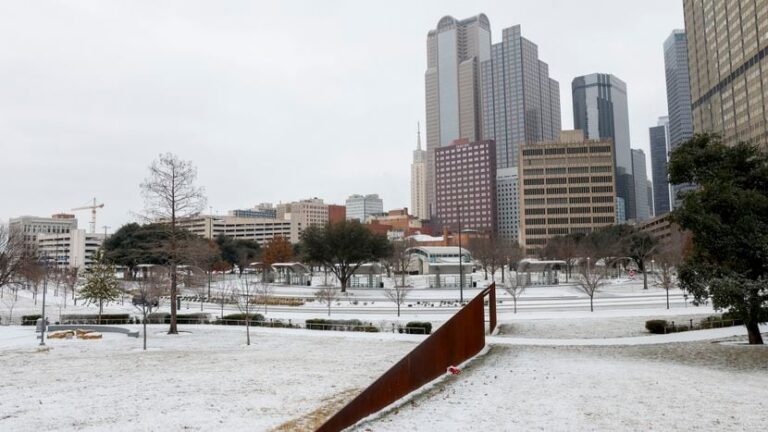Ice storms, cold waves, hail, winter storms. Texas has it all. And according to the National Risk Index, a database maintained by the Federal Emergency Management Agency, the combination of these weather events results in at least $754 million in annual losses in Texas and at least $106.4 million in losses in Dallas. It is said that there is a dollar loss.
This index combines the likelihood and consequences of natural disasters with community risk factors to estimate risk at the census tract and county level. It calculates the expected annual loss of building value, agricultural losses, and even population loss due to 18 natural disasters in the United States, including earthquakes, hurricanes, and coastal flooding.
An arctic front moved into Texas this week, and the state is bracing for subzero temperatures that could harm its power grid and urban infrastructure, and officials say the damage remains. Several incidents earlier this week included an eight-vehicle accident due to icy road conditions and multiple water outage calls for burst pipes.
North Texas counties have the highest risk of hail disasters in the entire state of Texas, with approximately nine hail storms per year and more than $340 million in annual losses. Dallas, Denton, Tarrant and Collin will have the largest expected annual losses. Dallas County tops the rankings with projected losses of more than $102 million annually, primarily from building damage. Denton and Tarrant counties have estimated hail losses of more than $92 million and $85 million, respectively, each year.
Texas ranked first in the nation with 458 hailstorms in 2022, ahead of Nebraska and Minnesota with 399 and 387, respectively, according to the Insurance Council of Texas. According to NRI, Dallas, Denton and Tarrant counties rank among the top three in the nation in terms of annual expected damage to building values from hail.
Hail is the costliest ice-related natural disaster affecting North Texas counties. Although it's not usually associated with winter precipitation, it's one of the most common severe weather threats in the region, said Jennifer Dunn, a meteorologist with the National Weather Service Fort Worth.
“But we also get hail in the fall, and sometimes we get strong storms and cold fronts below early winter that gather storm material that can produce hail in those months,” she said. .
Winter weather like the one Texas has been experiencing recently is expected to leave the state with an annual loss of $56.9 million, or about $813,000 in Dallas. According to NRI, winter weather consists of winter storms, where the primary precipitation is snow, sleet, or freezing rain.
Extended periods of extremely cold temperatures also pose a risk to North Texas counties. Such cold snaps occur two to three times a year in Texas, and NRI estimates that they cost North Texas $7 million annually. During the cold snap, public officials encourage residents to stay home to minimize the effects of life-threatening temperatures.
NRI uses statistical measures of the value of life to estimate population losses due to natural risks. According to NRI's technical documentation, the measure treats each death or 10 injuries as an economic loss of $11.6 million.
According to the index, ice storms, which NRI defines as freezing rain conditions, are expected to result in annual losses of $1.4 million in Denton and $874,000 in Dallas. Statewide, projected annual losses exceed $33.4 million, with damage to buildings and property values accounting for $21.6 million.
“Whether it's snow, sleet, or freezing rain, any winter precipitation season will have an impact on the region at any given time. It will also have different but very noticeable impacts depending on how the event unfolds. ,” Dunn said.
Although the National Risk Index estimates annual losses based on an equation that includes exposure, annual frequency of occurrence, and historical loss rates, some winter events far exceed calculations. According to the Insurance Council of Texas, the winter storm that hit Texas in February 2021 left $10 billion in damage, second only to Hurricane Harvey ($20.1 billion) and Hurricane Ike ($15.9 billion). It was the third costliest storm in Japan. According to VSL, the accident killed more than 240 people and had a human cost of $2.7 billion.
According to a recent report from the National Center for Environmental Information, from 1980 to 2023, Texas experienced at least 170 weather events and catastrophes that each cost more than $1 billion. This includes 100 severe storms, 10 winter storms, and 1 freezing incident.
In 2023, Texas did not experience a billion-dollar freezing accident, but due to the effects of drought in the South and Midwest and heatwaves from spring to fall, damage totaled $14.5 billion, including Texas. A total of 247 people died in seven states.

